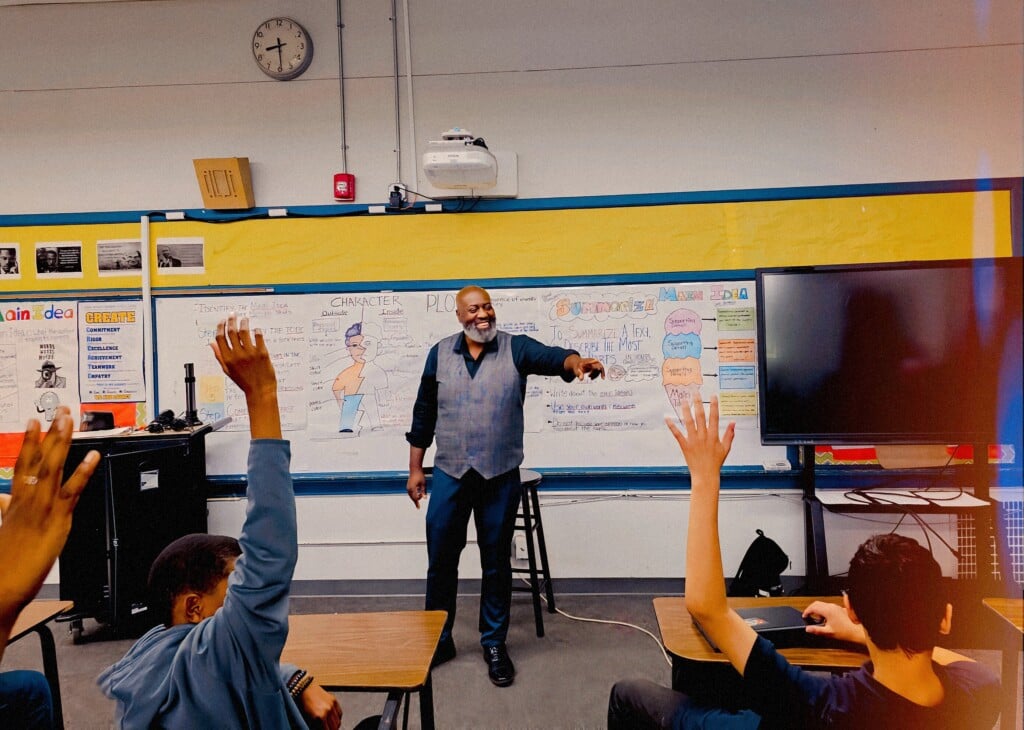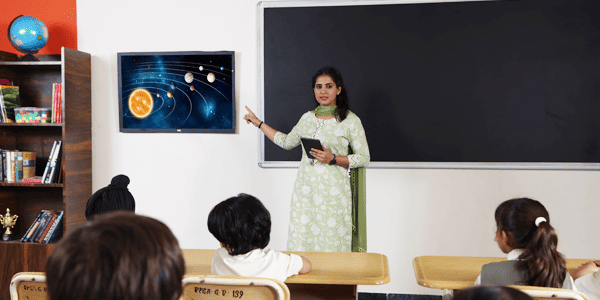Boost Your Child’s Confidence with Primary Science Tuition Singapore
Wiki Article
Exploring the Various Teaching Methods in Main Scientific Research Education And Learning Today
The landscape of primary scientific research education and learning is progressing, with numerous mentor strategies acquiring prestige in contemporary class. Inquiry-based knowing, hands-on experiments, and the assimilation of technology are redefining exactly how educators engage young minds. Furthermore, joint strategies and differentiated direction are being used to cater to the diverse requirements of students, enhancing both involvement and understanding. As we analyze these methods, inquiries occur regarding their efficiency and the effects for future instructional practices. What might these changes in strategy mean for the following generation of students?Inquiry-Based Learning
Inquiry-Based Discovering (IBL) is a pedagogical approach that encourages students to explore clinical principles with questioning, investigation, and hands-on experimentation. This technique highlights the role of trainees as active participants in their learning, advertising important reasoning and analytical skills. By involving with real-world inquiries, students become determined and interested, which improves their understanding of scientific concepts.In IBL, educators serve as facilitators, guiding pupils as they browse their inquiries instead of providing information directly. This student-centered method permits distinction, fitting various discovering styles and rates. Pupils develop abilities in developing theories, developing experiments, and assessing information, which are important for scientific proficiency.
Additionally, IBL fosters collaboration amongst students, motivating them to share searchings for and ideas. This cumulative inquiry advertises social skills and a sense of community within the class. In addition, the process of inquiry urges durability, as pupils learn to accept failing as a stepping stone toward understanding.
Hands-On Experiments
Hands-on experiments are an essential component of efficient scientific research education, matching the principles of inquiry-based discovering. These experiments permit students to engage straight with scientific ideas, promoting a much deeper understanding through experiential discovering. By manipulating materials and observing results, young students can grasp abstract theories in substantial ways.Such activities promote essential thinking and analytic abilities, as students hypothesize results, conduct experiments, and analyze outcomes. This process motivates them to ask concerns, improve their understanding, and develop a scientific mindset. Moreover, hands-on experiments can be tailored to diverse understanding styles, guaranteeing that all trainees have the chance to involve meaningfully with the web content.
Furthermore, hands-on experiments commonly urge cooperation amongst peers, advertising team effort and communication abilities. Operating in groups makes it possible for pupils to share concepts, review searchings for, and discover from each other, which improves their total academic experience.
Integrating hands-on experiments into the key scientific research curriculum not just enhances the learning setting yet also grows a lifelong interest in scientific research. By proactively joining their education and learning, students are more probable to establish an enthusiasm for scientific questions that prolongs past the class.

Modern Technology Integration
Incorporating innovation into main science education has actually become progressively necessary in cultivating student interaction and improving learning results. Using electronic devices, such as interactive simulations, digital labs, and academic software application, gives pupils with opportunities to check out scientific principles in cutting-edge methods. These resources help with a deeper understanding of complex topics by allowing learners to visualize and manipulate variables that would be not practical in a typical classroom setup.Moreover, technology combination motivates customized discovering experiences. Trainees can progress at their very own pace, revisiting challenging principles via multimedia sources, which accommodate various discovering styles. This adaptability not just supports specific growth but additionally grows a sense of freedom in students.
Additionally, technology functions as a bridge to real-world science, connecting trainees with current study and professional payments. Accessibility to clinical journals and online data sources expands trainees' perspectives on clinical inquiry and cultivates crucial believing skills.
Collaborative Understanding
Collective understanding plays a crucial function in primary scientific research education by promoting teamwork and communication abilities among pupils. click to find out more This strategy motivates students to interact, share understanding, and involve in problem-solving, which improves their understanding of clinical concepts. By taking part in group tasks, pupils discover to articulate their concepts, pay attention to diverse point of views, and negotiate solutions, all of which are essential skills in both scholastic and real-world contexts.
Study indicates that collective learning can cause increased inspiration and engagement in scientific research topics, as students discover satisfaction in shared experiences (primary science tuition Singapore). In addition, this approach prepares trainees for future collective undertakings, equipping them with the skills necessary for effective team effort in college and professional atmospheres. Ultimately, embracing collective discovering in key scientific research education can significantly enrich the discovering experience and advertise a much deeper understanding of clinical inquiry
Separated Guideline

Set apart instruction can materialize in various means, such as varying the material, procedures, or items of knowing. Teachers might make use of tiered projects that supply varying degrees of intricacy, enabling pupils to function at their corresponding readiness levels. Additionally, flexible organizing approaches can assist in cooperation amongst pupils with different abilities, fostering peer knowing.
Analysis plays a vital function in this technique, as it educates direction and assists teachers comprehend each trainee's special requirements. Formative evaluations, such as tests and observations, can assist educators in adjusting their strategies to enhance learning outcomes. primary science tuition Singapore. Inevitably, by implementing distinguished direction in main science education, educators can grow an extra fair and reliable learning setting, encouraging all pupils to reach their complete possibility in comprehending scientific phenomena
Verdict
In recap, the varied mentor methods in primary scientific research education and learning, including inquiry-based learning, hands-on experiments, technology integration, joint understanding, and separated direction, collectively contribute to a more reliable discovering environment. These approaches advertise important reasoning, analytical skills, and a much deeper comprehension of clinical ideas. By carrying out these methods, educators can develop helpful and engaging class that pop over to these guys attend to the varied demands of trainees, inevitably promoting a long-lasting passion in science and boosting academic success.Inquiry-Based Discovering (IBL) is an instructional technique that motivates pupils to check out clinical concepts with wondering about, investigation, and hands-on their website experimentation.Collective understanding plays an important duty in primary science education by promoting synergy and communication abilities among students.Research suggests that joint learning can lead to enhanced inspiration and involvement in science topics, as students discover pleasure in common experiences.In cultivating an inclusive knowing setting, distinguished direction arises as a vital strategy to accommodate the varied demands and capacities of students in primary science education. Ultimately, by applying separated direction in key scientific research education and learning, educators can cultivate an extra reliable and fair knowing atmosphere, equipping all trainees to reach their full potential in comprehending clinical sensations.
Report this wiki page